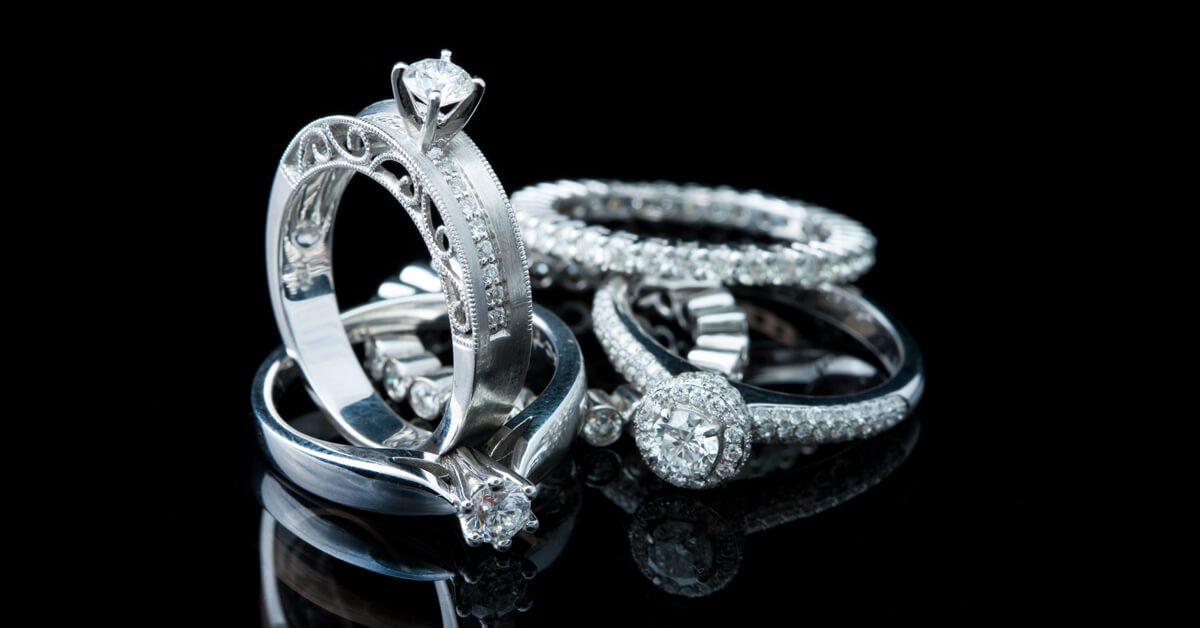Back in 1886, the six-claw diamond setting technique was invented. The use of six thin metal prongs that hold the diamond allows a considerable amount of light to enter the gemstone through the underside to be reflected out the top (more than can get in when the stone is surrounded by metal). This results in a beautiful sparkle. This diamond-setting technique has been the standard for more than 135 years. And most people just assumed it couldn’t be improved upon. But not master jeweler Ian Douglas, inventor of the ‘floeting’ diamond.
The New Zealand jeweler has been trying to make his concept a reality for 20 years. Now, he’s finally succeeded with the help of Canadian master diamond cutter Mike Botha. After the emergence of new technologies; millions of dollars of investment; help from the likes of metallurgists, laser engineers, testing laboratories, and patent attorneys; extensive testing; and a number of destroyed diamonds, floeting diamond jewelry is now real, patented, and available for purchase. For now, it’s a 100-piece collection of rings, ear studs, and pendants in 18 karat gold and platinum.
This new setting technology can currently accommodate diamonds of 0.20 to 100 carats. The intent is to expand it from diamonds to other gem shapes like emerald, oval, and pear, and other gems like sapphires and rubies.
What’s Different About Floeting Diamond Jewelry?
Lots of people have asked their jewelers, “Can’t I get diamond jewelry without metal clasps on the stone?” And they’re always disappointed by the answer. But now, floeting diamond jewelry has eliminated the prongs and is set in a way that allows more light to enter the stone, creating an even more brightly shining, dazzling piece of jewelry.
Tiny proprietary grooves are laser cut into the diamond just below the girdle. The stone is then secured with a metal collet that fits into the grooves, made from a high-tensile titanium alloy that’s buffered by a platinum post in the ring, plus a platinum base insert for the pendants. The collet allows more of the gemstone to show above the setting than with the traditional claw setting. Additionally, it’s open on all four sides to allow plenty of light to enter the underside of the diamond (in contrast to a bezel setting, which uses a metal band that encircles the diamond at its girdle).
And not only does the floeting diamond have a superior sparkle, it’s also more securely set. Independent testing confirms that this new setting is 20% more secure than traditional settings. Testing recreated the scenario of dropping diamond rings onto a hard wood surface from a distance of 1 meter above. With a traditional claw setting, the diamond came loose after 298 drops; the floeting diamond was still secure after several thousand drops.
Have Precious Metal Jewelry to Sell?
You may not have gotten your hands on any floeting diamond jewelry yet, but perhaps you’re a jeweler or pawnbroker with some gold, silver, platinum, palladium, or rhodium-plated jewelry. If so, and you’re interested in selling it for a fast, fair payment, get an idea of what we’ll buy your lot for with our free online payout estimator tool. We look forward to seeing your precious metal jewelry!












